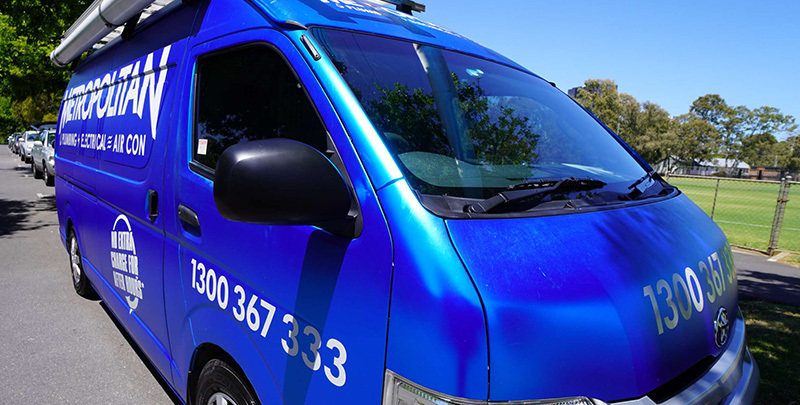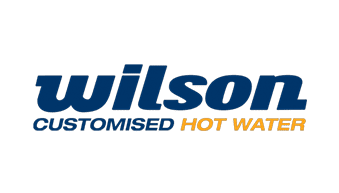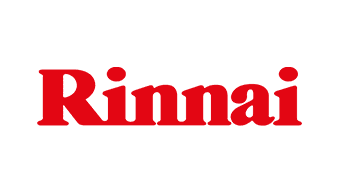
How Can Heavy Rain Affect Your Plumbing?
Picture this: a torrential downpour, the rhythmic drumming of rain against your windows, nature’s spectacle in full force.
While heavy rain is undoubtedly awe-inspiring, it also brings with it a set of challenges that extend beyond the puddles forming outside your home.
In this exploration, we unravel how heavy rain can affect the often-overlooked yet vital aspect of your home – the plumbing. Discover the potential plumbing pitfalls as we delve into how heavy rain can affect your plumbing, uncovering the risks that arise when the skies open up.
Heavy Rain and Plumbing
Heavy rain can introduce a series of stressors to your plumbing system depending on its intensity and duration. As water cascades from the heavens, it saturates the ground and tests the resilience of the pipes, fixtures, and infrastructure designed to manage it.
In this blog, we embark on a journey to understand the multifaceted impact of heavy rain on plumbing, dissecting both the immediate and subtle consequences that may unfold.
But before we dive into the complexities, let’s set the stage with a brief overview of heavy rain and its prevalence in certain regions. By comprehending the frequency and patterns of heavy rainfall, we can better grasp its challenges to our plumbing systems.
So, buckle up as we navigate the waters of heavy rain and plumbing, exploring the potential pitfalls and unveiling the strategies to safeguard your home from the plumbing perils that accompany the storm.
Understanding the Vulnerability of Plumbing Systems
Understanding how heavy rain impacts plumbing requires grasping the intricate design of plumbing systems. Engineers design plumbing systems to manage water flow in and out of your home efficiently. However, this complex network is not immune to the forces unleashed by heavy rain.
The typical vulnerabilities lie in the susceptibility of pipes, joints, and fixtures to increased water volume and external pressures. As we explore the direct effects of heavy rain, we’ll uncover the weak points that demand our attention.
Direct Effects of Heavy Rain on Plumbing
Understanding this direct consequence is vital for homeowners as it underscores the importance of having a robust plumbing system capable of withstanding heavy rain. If you’re concerned with the state of your roof plumbing, call a professional immediately before the problem gets worse.
-
Excess Water in Sewer Systems
One of the most immediate and palpable impacts of heavy rain on plumbing is the inundation of sewer systems. As rainwater eliminates the landscape, it seeks the path of least resistance, often overwhelming the capacity of sewer systems to handle the sudden surge. The consequences of this overload can be felt directly in residential plumbing.
In many cases, the excess water infiltrates the sewer lines, leading to sewage backups in homes. Picture toilets, gurgling drains slowing down, and, in extreme situations, sewage backing up into basements. The potential for water damage to fixtures and the increased risk of contamination pose significant threats to property and health.
-
Soil Erosion and Shifting
As heavy rain relentlessly beats down on the ground, it sets off a less visible but equally impactful consequence—soil erosion. The force of rainwater can erode the soil around your property, jeopardising the stability of the ground beneath.
It poses a significant risk for plumbing systems, especially those relying on underground pipes. The shifting soil can pressure lines, potentially causing them to bend, crack, or rupture.
Understanding the correlation between heavy rain, soil erosion, and plumbing vulnerabilities is crucial for homeowners looking to fortify their plumbing against the silent threat of shifting ground.
Gain valuable insights into how heavy rain can affect your plumbing infrastructure as we break down the potential issues that may arise during intense rainfall.
-
Flooding and Water Backup
Heavy rain and flooding often go hand in hand. When the water levels rise, the potential for flooding increases, posing a direct threat to plumbing fixtures and pipes within your home. The consequences can range from water damage to the structural integrity of your plumbing system.
Picture a scenario where your basement, housing critical plumbing components, becomes submerged. The risk of water backup in plumbing systems escalates, manifesting in slow drains, gurgling sounds, and overall compromised functionality.
This section will provide a comprehensive overview of how heavy rain contributes to flooding and water backup, offering insights into the preventive measures that homeowners can employ to fortify their homes against such challenges.
Indirect Effects on Plumbing Fixtures
The indirect nature of basement flooding underscores the need for comprehensive preventive measures to protect living spaces and the infrastructure that keeps your plumbing in working order.
-
Basement Flooding
While heavy rain can directly lead to flooding in low-lying areas, its impact extends beyond what meets the eye. One of the indirect consequences that homeowners often grapple with is basement flooding. As rainwater saturates the ground, especially in areas with inadequate drainage, it can find its way into basements, causing havoc.
Basements often house crucial plumbing components, from water heaters to sump pumps. When inundated with water, these components can suffer damage, leading to malfunctions reverberating through the entire plumbing system.
-
Water Contamination
Another indirect effect of heavy rain on plumbing manifests in water quality. As rainwater travels across various surfaces—roads, lawns, and other outdoor areas—it collects contaminants. When this water finds its way into water supplies, it introduces potential health risks.
Understanding how heavy rain contributes to water contamination is crucial for homeowners concerned about the safety of their household water. This section will delve into the mechanisms through which contaminants enter water supplies, outline potential health risks associated with water contamination, and provide actionable steps to safeguard your water quality.
In the subsequent sections, we’ll focus on protective measures homeowners can implement to fortify their plumbing against heavy rain’s direct and indirect effects.
From routine maintenance to innovative strategies like rainwater harvesting, we’ll explore a range of solutions designed to keep your plumbing resilient in the face of challenging weather conditions.
Protective Measures for Your Plumbing
Regular maintenance stands as the bedrock of a resilient plumbing system. Implementing a consistent inspection schedule is akin to providing your plumbing with a health check-up. It involves:
- Scheduled inspections: Regularly inspect all visible plumbing components, checking for leaks, corrosion, or any signs of wear and tear. This proactive approach allows you to catch potential issues before they escalate.
- Drain cleaning: Periodically clean your drains to prevent clogs and blockages. Hair, soap scum, and debris can accumulate over time, leading to slow drains or complete blockages.
- Pipe inspections: Consider professional pipe inspections for older homes or properties with mature trees. Tree roots can infiltrate underground pipes, causing significant damage.
Rainwater Harvesting: A Sustainable Shield
Embracing innovative solutions like rainwater harvesting contributes to environmental sustainability and serves as a protective measure for your plumbing.
- Collection systems: Install rain barrels or cisterns to collect rainwater from your roof. It reduces the volume of water entering the sewer system, alleviating stress during heavy rain.
- Non-potable use: Use harvested rainwater for non-potable purposes like watering plants, washing cars, or flushing toilets. It reduces the demand on your main water supply and minimises strain on the plumbing.
Vigilance and Early Intervention: Key to Prevention
- Recognising signs: Stay vigilant for signs of potential plumbing issues. Unusual sounds, water discolouration, or changes in water pressure can indicate underlying problems. Addressing these signs can prevent extensive damage.
- Professional inspections: Engage plumbing professionals for periodic inspections, especially before the rainy season. Their expertise can uncover hidden issues and prepare your plumbing for the challenges ahead.
Protective measures for your plumbing involve a combination of proactive maintenance, innovative strategies like rainwater harvesting, community-level stormwater management, and vigilant early intervention. By incorporating these practices, you fortify your plumbing against the impact of heavy rain, ensuring it remains robust and resilient in the face of inclement weather.
Recognise Potential Issues
In conclusion, heavy rain can significantly impact your plumbing directly and indirectly. Understanding the plumbing system emergencies, recognising potential issues, and implementing protective measures are vital in maintaining a resilient plumbing infrastructure.
As we navigate through the complexities of heavy rain and plumbing, remember that proactive measures and regular inspections with professional plumbers are your allies in safeguarding your home from the challenges posed by inclement weather. Stay informed, stay vigilant, and ensure the longevity of your plumbing system in the face of heavy rain.
Please note: This information is provided for advice purposes only. Regulations differ from state to state, so please consult your local authorities or an industry professional before proceeding with any work. See our Terms & Conditions here.
Published: 2023-12-12

















